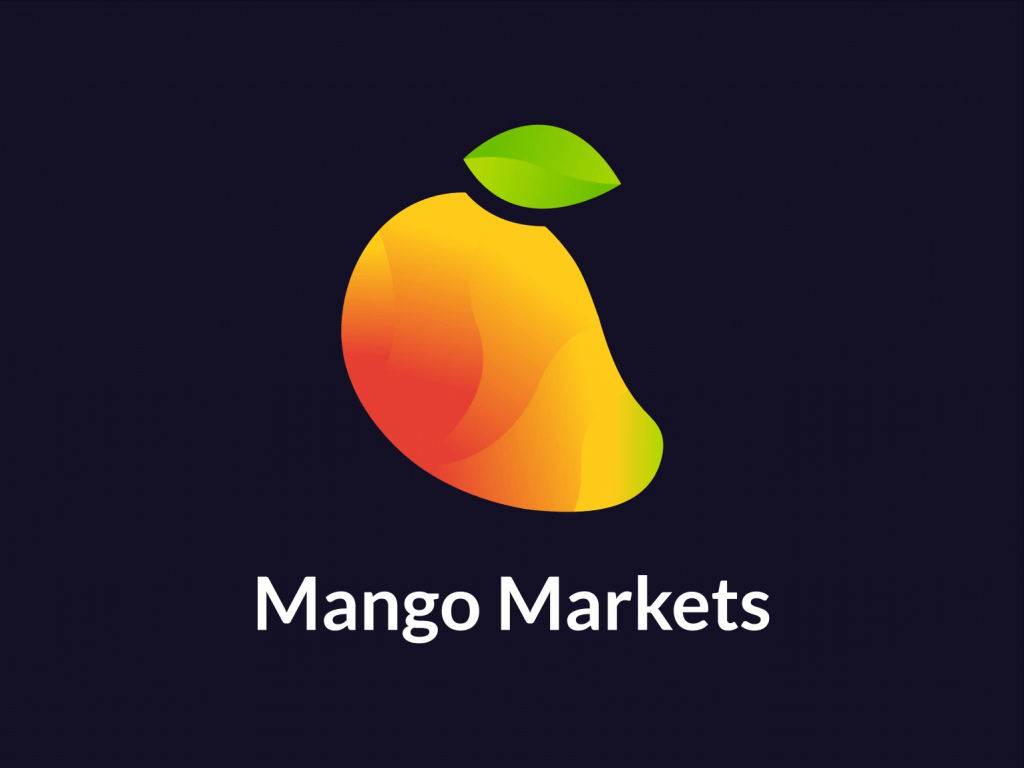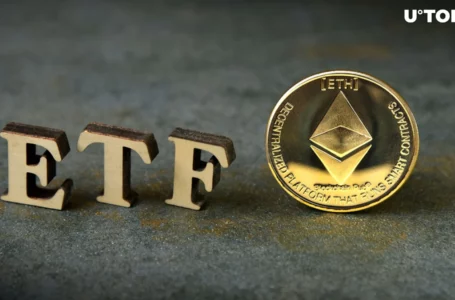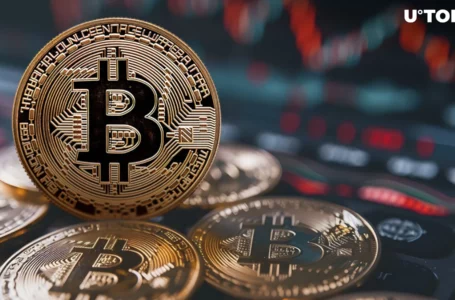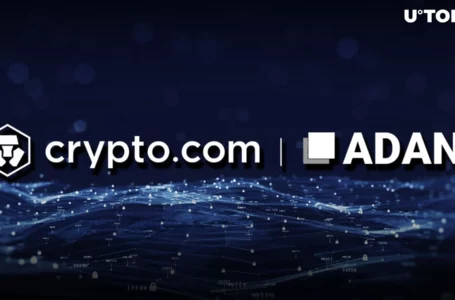
What is Mango Markets?
Mango Markets is a decentralized derivatives exchange built on the Solana blockchain. Its user-friendly interface allows users to lend, borrow, swap, and leverage trade crypto assets. Mango Markets allows assets deposited on the platform to be cross-collateralized, which means that assets can be shared as collateral between borrow/lending and leverage trading. These assets will automatically earn interest and serve as available collateral to leverage trade or withdraw a borrow.
Mango wants to combine CeFi’s liquidity and usability with DeFi’s permissionless innovation at a lower cost to the end-user than both presently offer. Mango achieves this by providing users with an on-chain limit order book style trading system on its interface. Presently, this is a rare feature among DeFi platforms as most of them use a constant product AMM swap feature to enable decentralized trading.
Moreover, since Mango is built on the Solana blockchain, it can utilize the shared order book of the Serum DEX for spot margin trading, while perpetual futures are traded on Mango’s own order book. Mango Markets also has its own governance token called MNGO, which allows its holders to vote for decisions within the Mango DAO.
At the time of writing, according to DeFi Llama, ‘Mango Markets’ occupies the 13th place in overall TVL within the Solana ecosystem, with over $175 million in assets locked on its platform.
Pros and Cons
Pros
- The cross-margin feature allows for more capital efficiency
- Completely decentralized – no KYC requirements.
- Built on Solana- Low latency and transaction cost
- Mango users unlock the highest level of savings on Serum DEX trading fees due to its aggregate deposits of MSRM.
- Email alerts and Risk Calculator Features are available
- Account Delegation enabled.
- Downloadable trade history in csv format for tax filings
Cons
- A low number of trading pairs supported
- Deposit interest rates aren’t incredibly competitive
- Less beginner-friendly than centralized exchanges
Team & History
Mango Markets is currently managed by the Mango DAO and is the brainchild of Dafydd Durairaj and Maximilian Schneider.
Dafydd Durairaj is a seasoned developer with a long history of building algorithmic trading and market maker solutions for financial markets. Dafydd was initially inspired to create an on-chain derivatives exchange after coming across dYdX in 2019.
However, he held back on creating a project because he felt that Ethereum was just too slow and expensive to guarantee the best user experience for on-chain derivatives and margin trading at the time.
This changed in 2020 when Dafydd came across the Serum Dex built on Solana. He finally felt that the right opportunity to create an on-chain derivatives exchange that provided users with the best experience and low latency had arrived.
AMM vs Order Book
Before we begin looking at Mango Markets, let us understand the different market-making mechanisms. Specifically, there have been two predominant market-making mechanisms employed by different crypto exchanges (CeFi and DeFi) over the years- AMM and the Order Book method. So let’s take a look at how they work and their differences.
AMM
AMM stands for Automated Market Maker. This mechanism is commonly employed by decentralized exchanges to facilitate swaps of token pairs.
It was first born in the paper “Improving Front Running Resistance of X *y = K Market Makers”, written by Ethereum’s co-founder Vitalik, and has become increasingly popular with several DeFi projects. For example, projects like Uniswap, Sushiswap, Pancakeswap, etc., use an AMM mechanism.
The value of assets in AMMs are determined using the simple mathematical formula of x*y = k. Then, these assets are arranged into liquidity pools, which are rebalanced as users trade to add or take liquidity from one side of the pool.
Order Books
The order book mechanism is usually seen on centralized crypto exchanges such as Binance, Kucoin, etc.
Order book exchanges allow users to set buy/sell orders at specific prices instead of the market price. This offers users the ability to pre-set trades at specific price points, creating a stress-free trading experience.
In exchanges using order books, the user interface displays all the pending buy/sell orders for a particular asset placed by platform users. These orders are typically matched by the centralized exchange hosting them, for which the exchange takes a fee. In decentralized exchanges using an order book, this order matching function is typically carried out by a smart contract on the platform.
Differences
While there are a slew of differences between these mechanisms, it would be inappropriate to assert that this makes one better than the other. Both mechanisms have their own place in the broader DeFi ecosystem. Each tends to suit the needs of a specific type of trading over the other.
Having said that, let us look at the differences between the two mechanisms.
Trade Placement– Order Books allow their users to place limit orders. This means the user can choose to define the price they would like to buy or sell their assets. The control rests with the trader.
AMMs, on the other hand, generally do not provide the user with the ability to place limit orders; rather, the trader has to be careful with the time at which he places his swap order. As a result, the trader does not have the same degree of control over the price the order executes relative to an order book exchange.
Trade Execution– When a limit order is placed on the order book, the user can expect the order to execute at that same price. However, this also means that certain orders can remain unfilled for a long time if the intended price target is not achieved.
Is it safe?
According to their documentation, the Mango code has been informally reviewed by Serum and Solana devs and the German white hat hacker team “Alles!’.
The Mango program also has a $70m DAO controlled treasury for insurance on v3 deposits. When there are bankrupt accounts, the insurance fund will pay off losses incurred by token lenders or perps contract participants.
Spot Margin
What is Spot Margin trading?
Margin trading essentially involves borrowing money to make bigger bets on the price movement of a specific crypto asset or asset pair, such as SOL-USD, for instance.
Crypto traders can borrow funds and bet on the price of a crypto asset moving in a specific direction, either up or down (also known as a long or short position, respectively). They can execute their trades on an exchange’s spot market with or without margin.
The amount a user can borrow usually depends on the collateral deposited and the leverage the particular exchange allows its users to take. Leverage is generally expressed as a multiplier on the deposited collateral.
How is Spot Margin trading on Mango Markets?
The Spot margin trading on Mango Markets is facilitated through the order book mechanism via Serum DEX, and users can take up to 10x leverage. This feature allows users to take a long or short position in the spot market by borrowing assets based on the collateral held in the account. Assets on Spot Margin have different maximum and maintenance leverage specifications.
For example, if a user holds $100 worth of SOL in their account, the platform will allow him to borrow and trade assets worth up to $1000 (around 10x).
On Mango, the margin option is enabled by default; therefore, funds are automatically borrowed for leverage trading.
If you would like to place a margin/leverage trade, simply place an order for your desired amount. If the required capital is beyond your deposits, funds will be borrowed for the position (as long as account health is eligible).
Conversely, if you do not want to take margin trade, uncheck the margin box before you place your spot order.
Types of Orders in Spot Margin on Mango Markets
Market Order– These orders are executed immediately at either the highest bid price for sell orders or the lowest ask price for buy orders.
Limit Order– Limit orders allow users to specify the price at which the order must execute.
Immediate or Cancelled (IOC) Order– If an order is placed and not filled within seconds, it’s cancelled. This allows users to save on gas by removing the need for manual cancellation if their limit order is not executed. IOC orders will always be the ‘taker’.
POST Order– These limit orders are added to the order book and earn maker fees if filled. POST orders will always be the ‘maker’.
Perpetual Futures
What are Perpetual Futures?
Perpetual Futures are synthetic trading markets that use stablecoins as collateral to allow investors exposure to liquid assets. By trading perpetuals, users can participate in market movements, reduce risk, and profit by longing and/or shorting with leverage on a futures contract. A futures contract is a financial derivative contract, which means that its value is derived from the underlying asset’s performance.
Unlike standard futures contracts, a perpetual futures contract has no expiration date. This avoids the need to re-establish a long or short position regularly. As a result, perpetual contracts’ pricing must be tied to the spot prices of their underlying assets.
This price anchoring of perpetual futures is achieved through a ‘funding rate’ mechanism. This mechanism balances perpetual swaps’ short and long positions by rewarding or discouraging trades. Consider it a rebate or tax that balances the demand for perpetual contracts on both the short and long sides.
How is Perpetual Future trading on Mango Markets?
Mango Markets offers perpetual futures built on the Mango protocol through its order book. Similar to spot margin trading, users are allowed to take leverage on their collateral to execute perpetual future trades.
Perpetuals on Mango allow initial leverage of up to 10x and maintenance leverage of 20x. If the value of your position (or collateral) falls and your leverage exceeds 20x, your account will be eligible for liquidation. Assets on Perpetual Futures have different maximum and maintenance leverage specifications.
Mango’s funding rate mechanism is computed continuously as a daily difference in the index price and current book price (current midpoint of the bids & offers). When the future market is trading above the oracle price, longs will have to pay shorts. When below the oracle price, shorts will pay longs. This rate is continually calculated and paid roughly every 5 seconds and is shown above the market as an hourly rate.
Types of Orders in Perpetual Futures on Mango Markets
In addition to the market order, limit order, IOC and POST order types that we’ve already seen in Mango’s Spot Margin feature, perpetual futures offer six more order types:
Stop Loss Order– If the price falls below a specified level, this order will initiate a market order. The ‘Trigger Price’ box is where you set the price threshold. You might use a stop-loss order to exit a position to mitigate downside risk if the price falls 20% below the entering price.
Stop Limit Order– A stop-limit order is similar to a stop loss, except it is triggered at a specific price target rather than a market price. The limit order’s price is set in the ‘Price’ box.
Take Profit Order– If the price rises above a certain level, a take profit order will trigger a market order. This can profitably close a portion or all of a position.
Take Profit Limit Order– This order works similarly to a ‘take profit order’, but a limit order is placed with a specified price instead of a market order.
Reduce Only Order– This ensures that an order will only be executed to reduce or close a position and never increase or open a new position. Check the Reduce Only box above the buy/sell button to apply.
Slide Order– This is a limit order that will set your price one tick more or less than the opposite side of the book.
Account Delegation
‘Account Delegation’ is a star feature of Mango Markets. This feature allows users to delegate ‘trading’ control of their ‘Mango accounts’ to different wallet addresses. To prevent the theft of funds, the control is purposefully limited to the ‘trading’ of assets. Delegates cannot withdraw funds from the original owner’s mango account.
However, this does not prevent the delegate from liquidating your account or draining your capital via malicious trading, so only use this feature with trusted entities. A Mango Account can have at most one delegate. The owner of the Mango Account continues to have complete control of the Mango Account irrespective of delegation.
Some of the best use cases of this feature are:
- Individuals may fund an account and delegate access to a friend that is an expert investor. The friend can make trades on their behalf.
- Users can set up full access on a hardware wallet (e.g., Ledger) while delegating access to a hot wallet (e.g., Phantom). This makes trade execution easier and ensures safe custody of the deposited capital. The same strategy could be applied to a core wallet and mobile wallet pair, so trading remotely is possible without sacrificing security.
- DAOs or other entities can deposit funds into an account and choose individuals to allocate those funds on their behalf. Mango recently used this feature to purchase mSOL for the treasury.
MNGO Token
$MNGO is the governance token for the Mango DAO. The token was initially launched through a public IDO with the majority of $MNGO (around 90%) locked in the DAO treasury- in which token holders vote on how the funds should be utilized. The remaining 10% was split, with 5% being put up for a public sale and the other 5% allotted to the project’s founders.
Utility
Apart from being used to avail fee discounts, as mentioned earlier, the MNGO token is used primarily in voting for or against proposals in the DAO. For example, any change to the Mango code must be via a proposal in the DAO. Furthermore, the proposal must have attained a minimum of 100 million MNGO ‘Approve’ votes for a successful vote, with the ‘approve’ votes outnumbering the ‘decline’ votes.
Unlike other DEX protocol tokens on chains like Ethereum, $MNGO token holders do not receive a share of the protocol revenue. Instead, all protocol revenue is sent to the Mango DAO vault.
Mango DAO
Mango Markets is managed by the Mango DAO, whose governance token is $MNGO. For any changes to the Mango code, it must be passed via a proposal on the governance forum. Governance proposals made on the Mango governance forum are separated into four categories: grants, listings, governance, and feedback.
Anyone with 0.01% of the Mango tokens staked (100,000 $MNGO) can create a proposal. To vote for or against a proposal, one must lock MNGO tokens in a smart contract for the “voting period.”
MNGO can be locked for up to 5 years to receive increased voting weight in the DAO up to 2x. Voting weight is calculated linearly based on a locking period. Locked tokens cannot be withdrawn until lockup expires.
Any Mango token staker can vote for or against proposals. Official proposals are not merely suggestions; they are executable code. A minimum of 2% of the total MNGO token supply (100 million $MNGO) needs to be cast for a proposal to be eligible for approval.
All proposals are subject to a 3 day voting period. If a majority and at least 2% of the total Mango Token supply are cast for the proposal, it is queued in the timelock and can be implemented after 2 days.
Final Thought
Mango Markets seems to be currently one of the best derivatives trading protocols on the Solana blockchain. With v4 of Mango Markets expected to go live sometime within the next three months, users can expect to see the optimisation of current features, new features and new asset markets.
Some of the features currently offered by Mango Markets, such as Account Delegation, email alerts and its optimised perpetuals market, are the best in the Solana ecosystem. With Solana becoming the next hot destination for DeFi due to its fast throughput and low latency, the future of protocols like Mango Markets is bright.


















